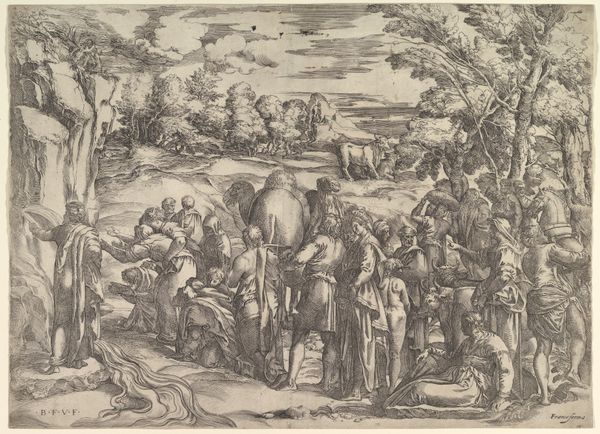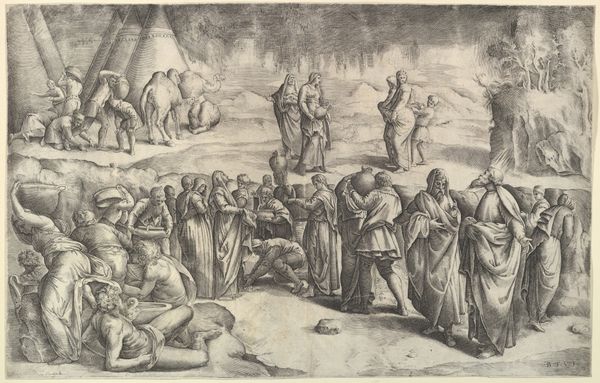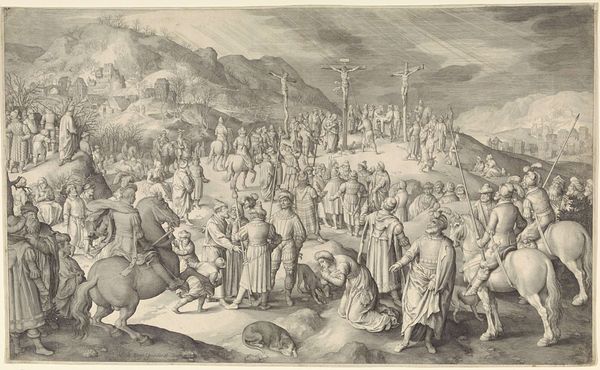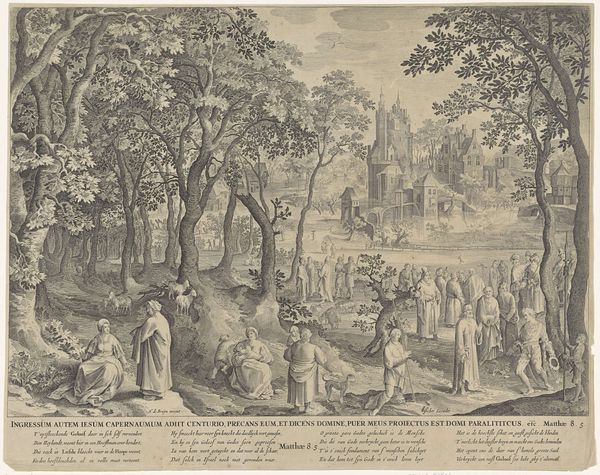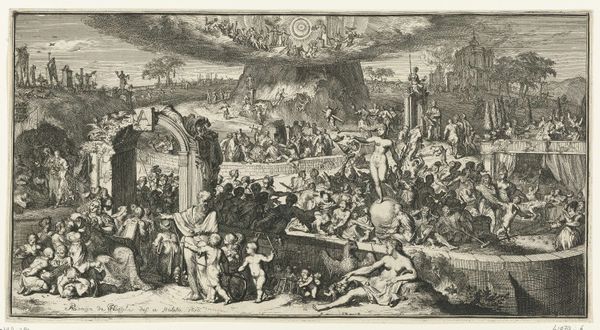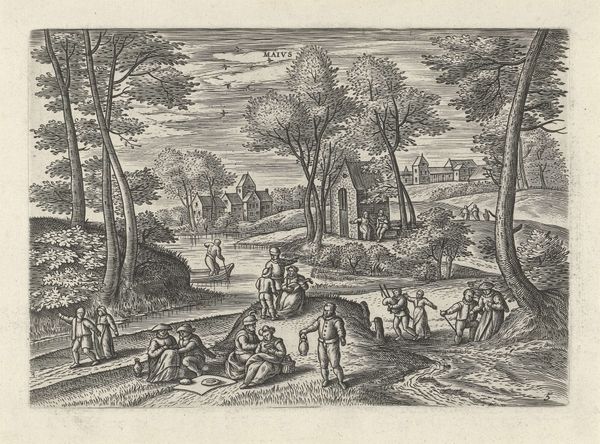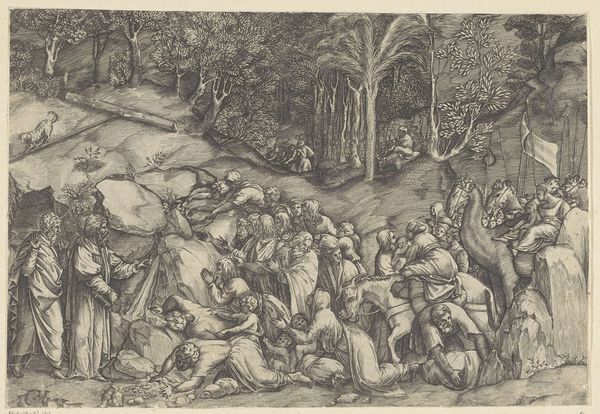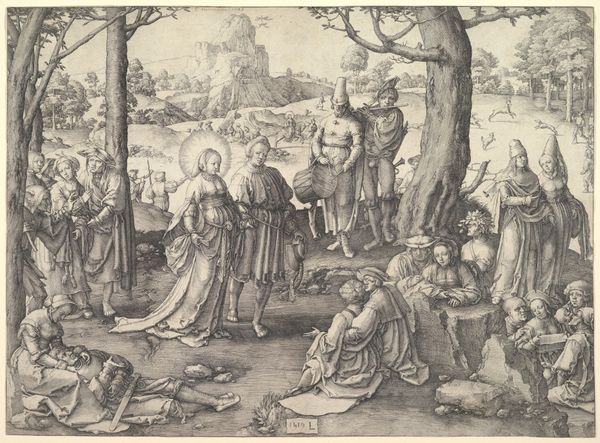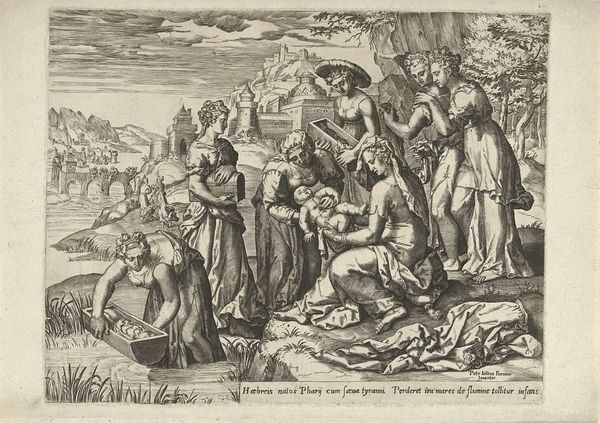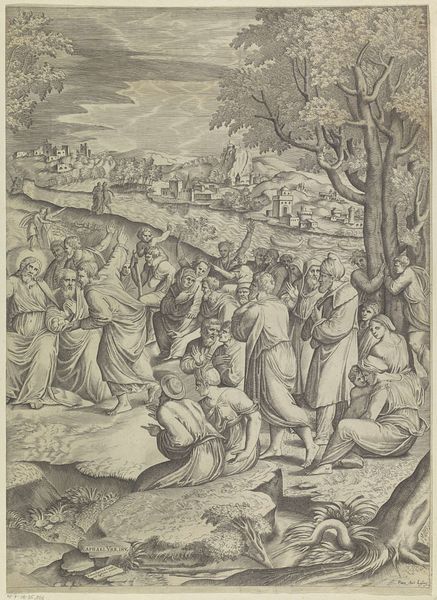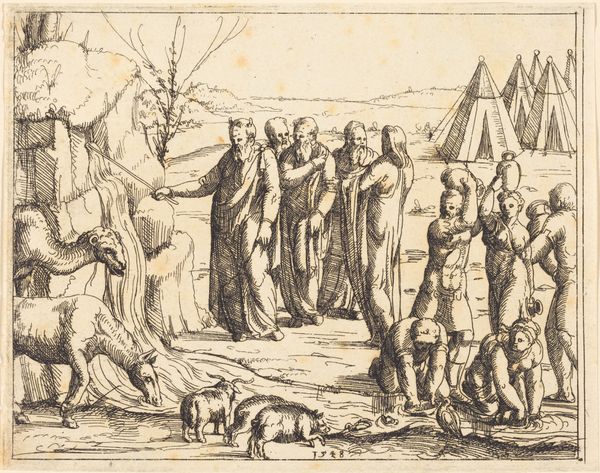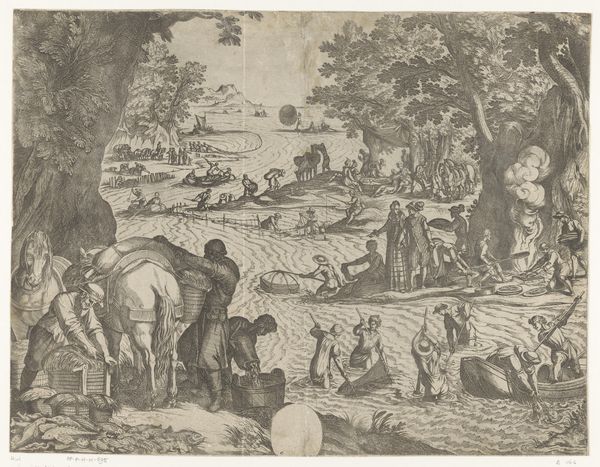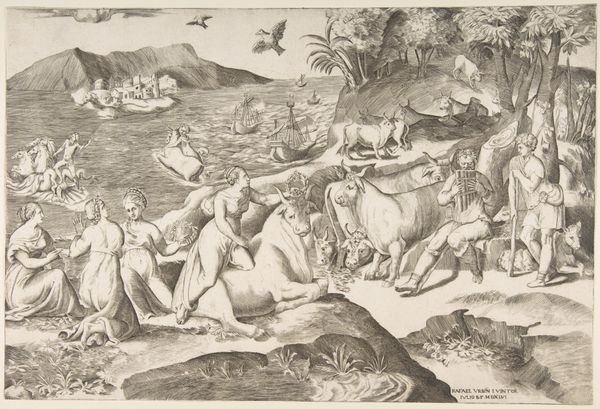
painting, oil-paint, wood
#
painting
#
oil-paint
#
landscape
#
figuration
#
oil painting
#
wood
#
genre-painting
#
history-painting
#
northern-renaissance
#
realism
Dimensions: 121.2 cm (height) x 162.7 cm (width) (Netto)
Curator: Pieter Brueghel the Younger's "Christ on the Road to Calvary," painted between 1579 and 1638, presents us with a compelling visual narrative rendered in oil paint on wood. The painting unfolds with layers of meaning, blending genre, history, and landscape elements in the Northern Renaissance style. Editor: Whew, a bit of a downer, isn't it? It hits you with the sheer weight of it all – like a bad dream, or maybe a slightly too-real nightmare. Look at all those figures; you almost feel squashed by them! Curator: Absolutely, and this is where the context becomes crucial. Brueghel was creating this work during a period of immense religious and political strife. The historical background informs our understanding. His treatment is deeply rooted in religious conflicts. The passion narrative in "Christ on the Road to Calvary" takes place not as a biblical event, but as an active indictment against social oppressions of the time. Editor: So, it’s less a literal depiction, and more… a mirror? We're all somehow complicit in the drama unfolding before us, then and now. I guess, looking at it that way makes the small figure of Christ almost… anyone of us could carry this symbolic weight. Curator: Precisely. And if we examine this within the theoretical framework of, say, intersectionality, we notice that each person carries a different type of oppression, a different type of suffering, while all participating in the same ordeal. Christ becomes less the isolated religious figure and more the embodiment of humanity under injustice. Editor: Gosh, that hits hard. I came expecting something old and stuffy, and I’m getting a whole contemporary gut-punch of self-reflection. Seeing how relevant art from centuries ago can still feel is why I still come to museums, every time I think I am sick of it all, this stuff makes me think differently again. Curator: Exactly, bringing art history and contemporary theory together creates avenues of exploration of historical and societal concerns regarding identity, gender, and politics that echo even now. Editor: What a thing – to still be finding new paths into an old master’s work. Alright, on to the next adventure.
Comments
No comments
Be the first to comment and join the conversation on the ultimate creative platform.
